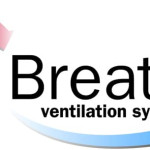The Invisible Threat Unveiling the Impact of Indoor Air Pollutants
In today’s fast-paced world, we often find ourselves spending a significant portion of our time indoors – whether at home, work, or recreational spaces. While we may feel safe and protected within these enclosed environments, the truth is that the air we breathe indoors can be riddled with unseen dangers. Indoor air pollutants, often lurking unnoticed, can have a profound impact on our health, well-being, and overall quality of life.
Understanding Indoor Air Pollutants:
Indoor air pollutants encompass a wide range of harmful substances that originate from various sources within our living spaces. These pollutants can be classified into two categories: biological and chemical.
Biological pollutants: These are living organisms or their byproducts that can adversely affect indoor air quality. Common biological pollutants include dust mites, pet dander, mold, pollen, bacteria, and viruses. These allergens and pathogens can trigger respiratory problems, allergies, and infections, particularly in individuals with compromised immune systems.
Chemical pollutants: Chemical pollutants are non-living substances released into the air from everyday products and activities. They include volatile organic compounds (VOCs) from paints, adhesives, and cleaning agents, formaldehyde from furniture and building materials, tobacco smoke, radon gas, and ozone from air purifiers and photocopiers. Prolonged exposure to these chemicals can lead to various health issues, ranging from mild irritation to severe respiratory diseases and even cancer.
Health Impacts of Indoor Air Pollutants:
The health implications of indoor air pollutants are far-reaching and can affect people of all ages. Short-term exposure to these pollutants can cause immediate discomfort, such as eye irritation, headaches, fatigue, and dizziness. However, the long-term effects are even more concerning.
Respiratory Problems: Indoor air pollutants are closely linked to a rise in respiratory issues, including asthma, chronic obstructive pulmonary disease (COPD), and bronchitis. For those already suffering from these conditions, exposure to indoor pollutants can worsen symptoms and lead to frequent hospitalizations.
Allergies and Sensitivities: Individuals with allergies or sensitivities are highly susceptible to biological pollutants like dust mites, pollen, and pet dander. Continuous exposure can trigger allergic reactions, making it challenging for them to live comfortably in their own homes.
Cardiovascular Diseases: Recent studies have also found connections between poor indoor air quality and an increased risk of cardiovascular diseases. Chemical pollutants like VOCs can contribute to inflammation and oxidative stress in the body, leading to heart problems over time.
Neurological Effects: Some indoor pollutants have been linked to neurological problems, affecting cognitive function and mental health. Exposure to VOCs, for example, has been associated with headaches, difficulty concentrating, and memory issues.
Children, the elderly, and individuals with pre-existing health conditions are particularly vulnerable to the adverse effects of indoor air pollutants. For children, exposure during critical developmental stages can have lasting impacts on their health and cognitive abilities. Similarly, older adults may experience accelerated aging and declining health due to prolonged exposure to indoor pollutants.
Combatting Indoor Air Pollution:
To safeguard our health and well-being, it is crucial to take proactive measures to improve indoor air quality. Here are some effective strategies:
Proper Ventilation: Ensuring good ventilation helps exchange stale indoor air with fresh outdoor air, reducing the concentration of indoor pollutants.
Regular Cleaning: Frequent dusting, vacuuming, and cleaning of surfaces help control allergens like dust mites and pet dander.
Indoor Plants: Certain houseplants can naturally purify the air by absorbing pollutants and releasing oxygen.
Use of Low-VOC Products: Opt for low-VOC or VOC-free alternatives when choosing paints, cleaning agents, and other household products.
Air Purification Systems: High-quality air purifiers equipped with HEPA filters can effectively remove airborne particles and harmful gases.
While we may not be able to see them, indoor air pollutants pose a significant threat to our health and well-being. Recognizing their impact and taking proactive steps to improve indoor air quality is crucial for maintaining a healthy living environment. By doing so, we can protect ourselves and our loved ones from the unseen dangers that lurk within the confines of our indoor spaces.
Contact the Professionals at EZ Breathe Today! 866-822-7328







